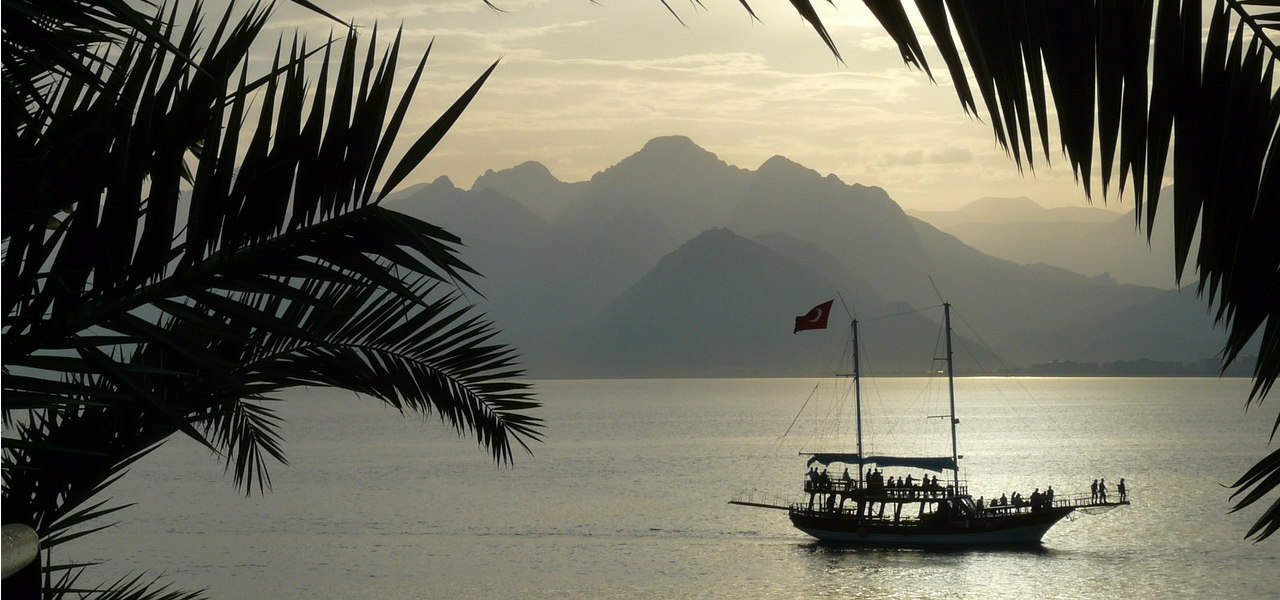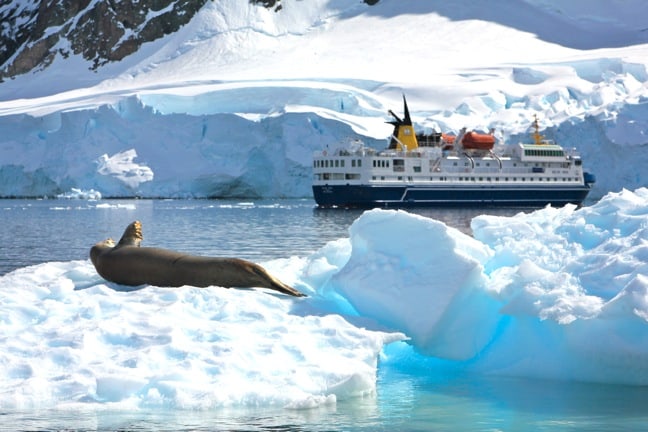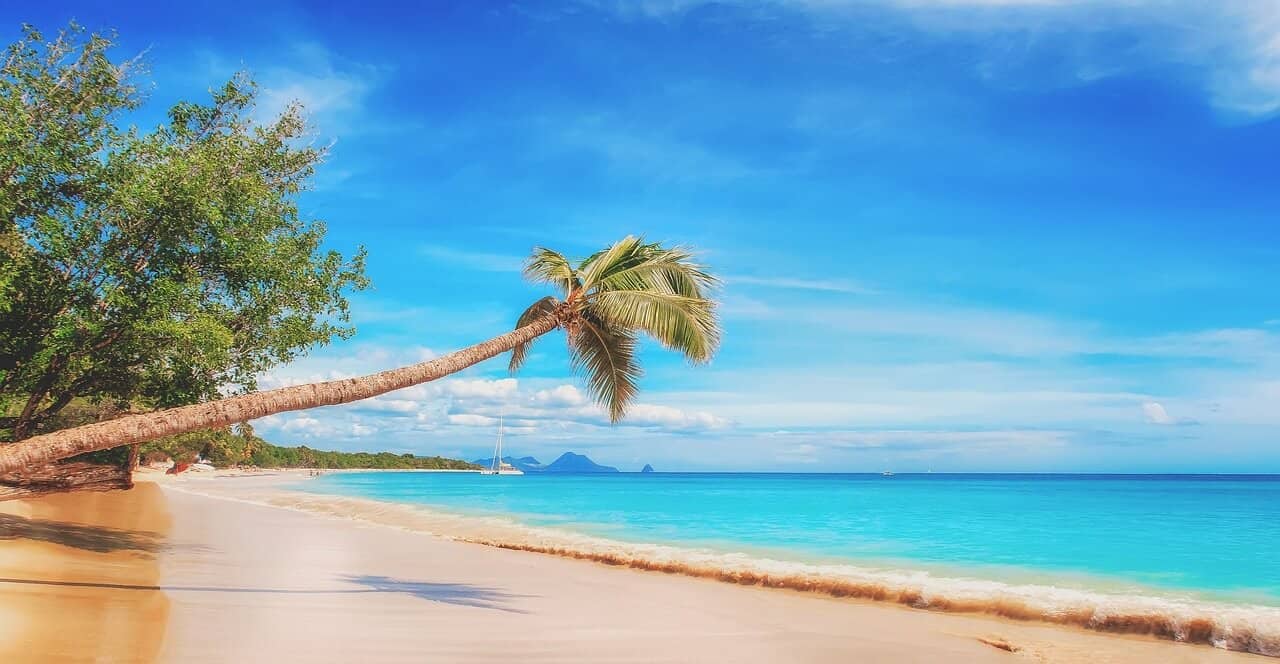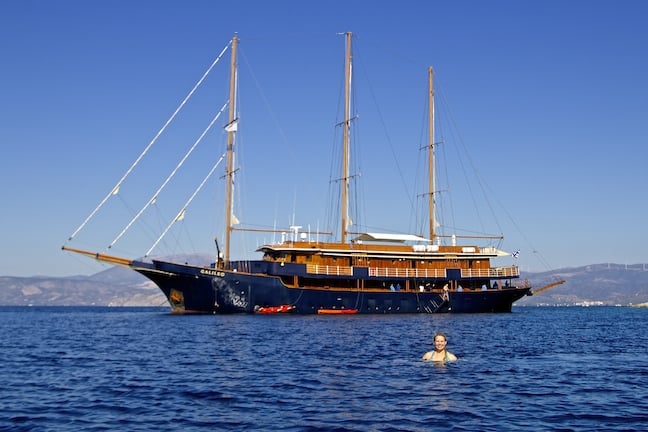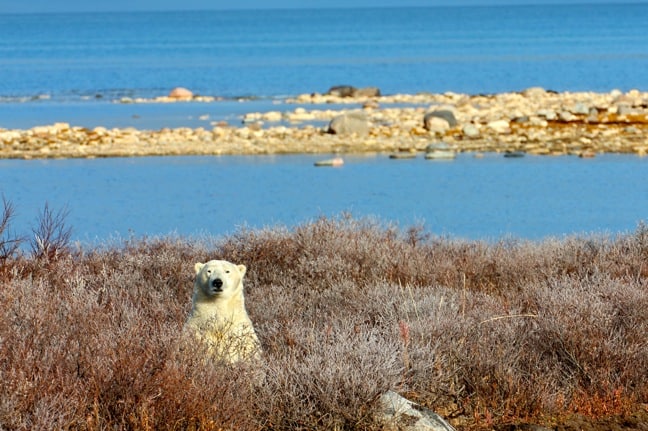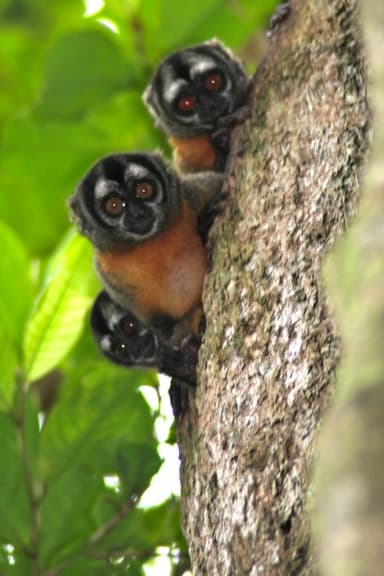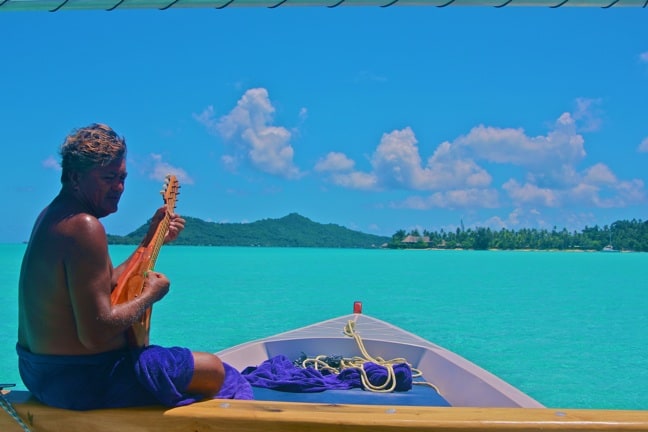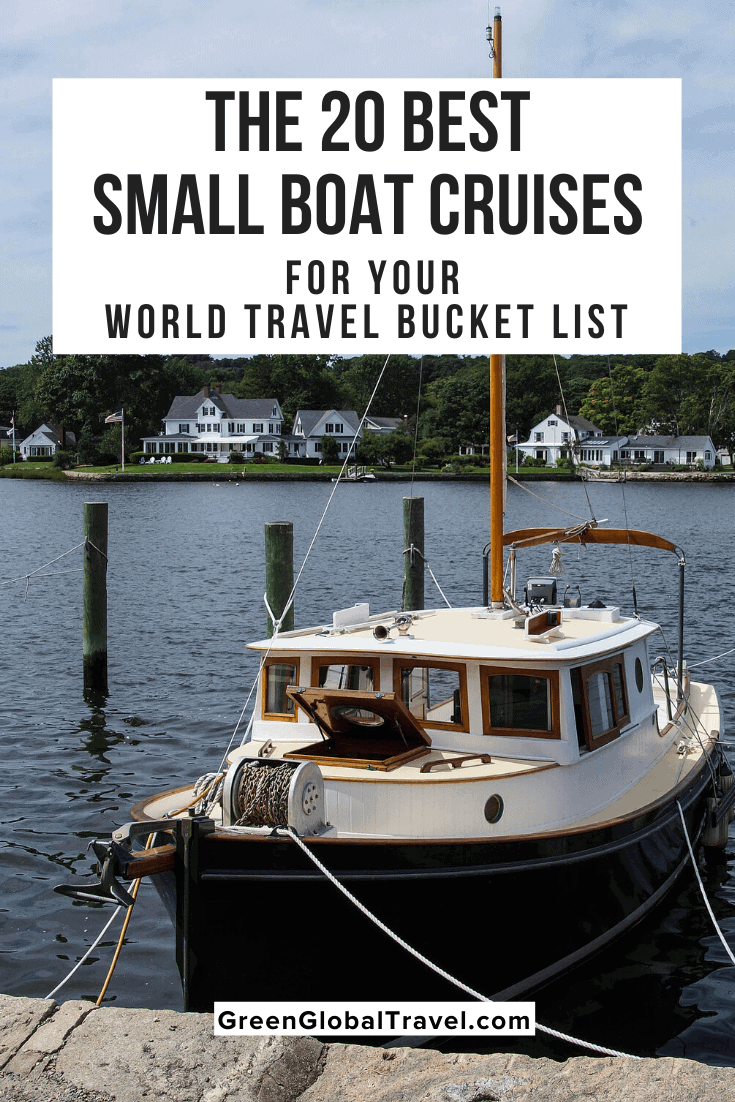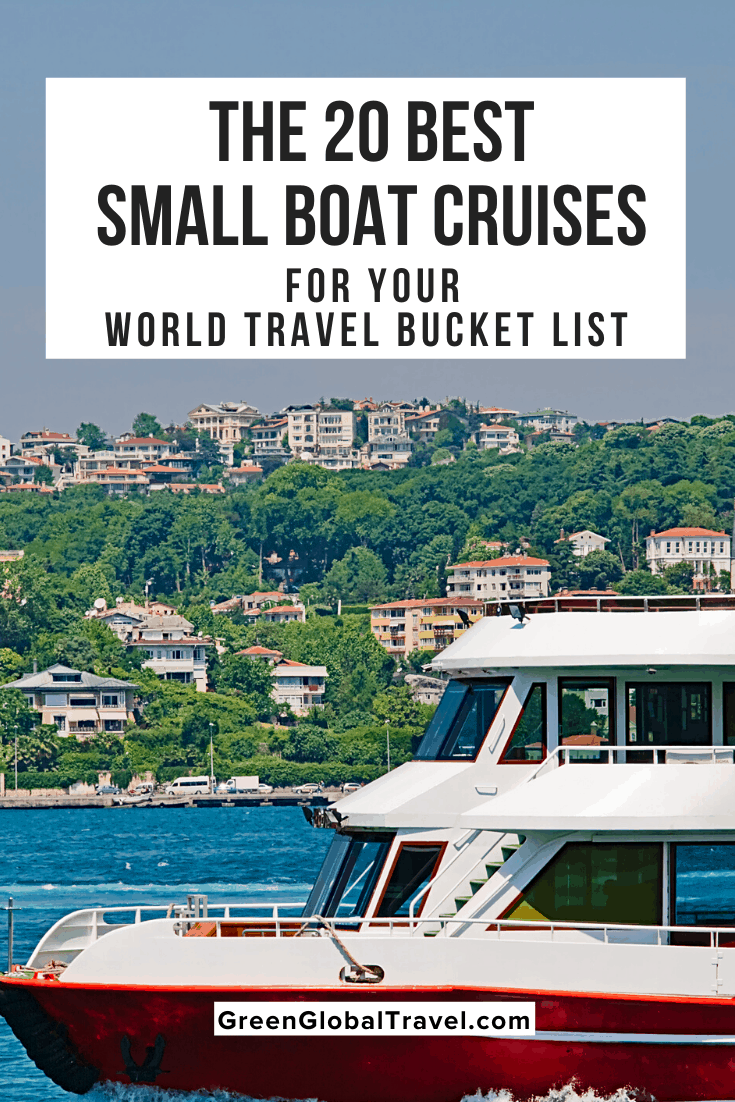Cruises have gotten a bad rap lately: One recent scientific study found that air quality on a cruise ship deck was “worse than the world’s most polluted cities.”
But not all cruise companies feature gigantic cruise ships carrying 5000+ passengers. In our eyes, small ship cruises are much better for travelers, locals, and the environment alike.
The best small ship cruise lines typically have less than 300 passengers, a lower guide-to-passenger ratio, and expert local guides. These small luxury cruise ships have become increasingly popular in recent years, offering a more intimate and immersive travel experience.
Some small luxury cruises focus squarely on nature and wildlife, while others focus more on the history and culture of a destination. But in general, small cruises are less about the amenities of the ship itself and more about exciting shore-based adventures.
For those who can afford it, bespoke private cruises are another attractive option, offering an excellent mixture of exclusivity and adaptability to your specific interests.
Whether you’re taking a river cruise in Europe or India or an ocean cruise in Greece or the Galapagos Islands, the world’s best small ship cruises offer an opportunity to explore remote locations the big luxury cruise lines can’t access.
And because their itineraries are often more in-depth, these small boat cruises give travelers a better chance to connect to a place and its people in a more authentic way.
READ MORE: The Importance of Community-Based Tourism
WHY SMALL SHIP CRUISES ARE SUPERIOR
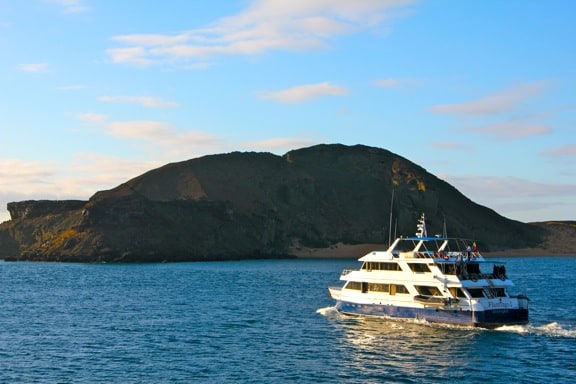
More Personal Space
With the jostling crowds at the buffet line, the ship docking points, and during shore excursions, large cruise ships can often feel overwhelming and claustrophobic.
The experience was so different from the small cruises we’ve taken that it’s virtually impossible to compare the two.
This makes it much easier to find your own personal space away from the crowd, to have quiet time or special moments as a couple or family.
READ MORE: 10 Romantic Places for Your World Travel Bucket List
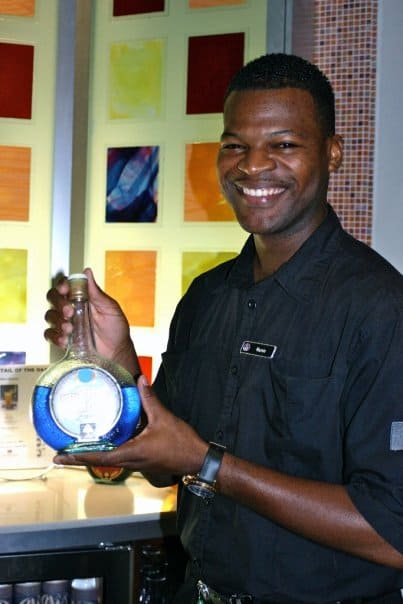
Better Personal Service
When you’re just one of the 5,000 cruisers packed into a huge floating city, it’s unreasonable to expect the attention to detail that comes with four-star service.
For travelers willing to sacrifice luxury in exchange for rock-bottom prices, the affordability and all-inclusive convenience of mega-ship deals may be a worthwhile trade-off.
Having a bartender who knows you want a Blue Hawaiian with your Happy Hour appetizers may not make or break your trip. But traveling with a company who makes you feel like more than just a number-coded wristband goes a long way towards making your trip feel special.
READ MORE: The Top 10 Things to Do in Curaçao
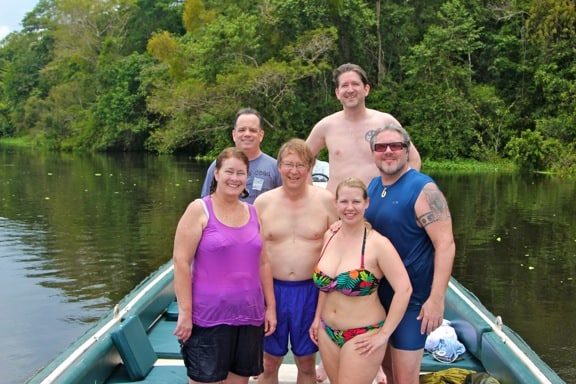
Connect with Like-Minded People
When you’re on a small ship with just 20-50 passengers for a week to 10 days, you tend to get to know everyone on board to some degree.
Instead of being sat at the same table with the same people night after night, on small cruises there seems to be an unspoken agreement that passengers will swap dining tables nightly.
It’s like a game of musical chairs, giving you plenty of opportunity to find out who you click with.
Inevitably, you’re bound to meet a handful of folks that share your same ideals. Especially when you take a nature/wildlife or history/culture-focused cruise, which each tends to attract a certain type of traveler.
Going on life-changing adventures with perfect strangers can create some surprisingly strong bonds. Perhaps you’ll even meet your future travel buddies!
READ MORE: Small Ship Cruising the Peruvian Amazon
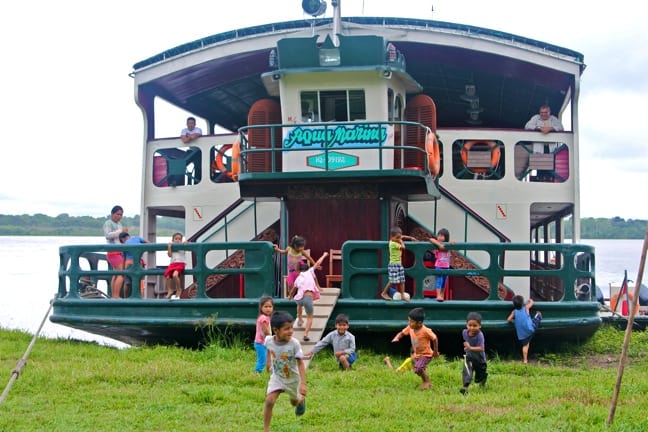
Small Ships Go Where Big Ships Can’t
You’ve heard the old saying, “Size doesn’t matter”? Well, in the case of cruise ships, it does. And in this case, bigger is very rarely better.
Small ships are simply more nimble than large ships. Unless you’re going to a mega port, big cruise ships often have to ferry their entire passenger load back and forth via small boats or Zodiac rafts.
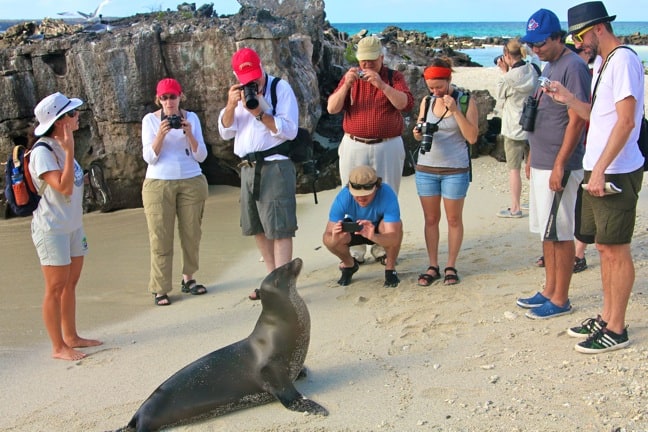
Exclusive Experiences
One of our favorite things about travel is getting a chance to learn first-hand about the history, culture, nature, and wildlife of a destination.
While other travel bloggers may prefer to explore places on their own, we love the knowledge we gain by traveling with local experts.
Because the number of people on small ship cruises is limited, there is usually at least one guide for every 8 to 12 passengers. With such intimate access to an expert, you’re virtually guaranteed to have once-in-a-lifetime experiences.
READ MORE: NatGeo’s Don George on Travel Writing
THE WORLD’S BEST SMALL SHIP CRUISES
- Africa Cruises: Nile River Cruise, Seychelles Cruise, Botswana Cruise
- Antarctica Cruises: Antarctica Cruise, New Zealand’s Sub-Antarctic Islands Cruise
- Asia Cruises: India Cruise, Philippines islands Cruise
- Caribbean Cruises: Coastal Cuba Cruise, Lesser Antilles Cruise
- European Cruises: Greek Islands, European Christmas Markets Cruise, Black Sea Cruise
- North America Cruises: Northwest Passage, Alaska Inside Passage Cruise
- South America Cruises: Chilean Fjords Cruise, Galapagos Islands Cruise, Peruvian Amazon Cruise
- South Pacific Cruises: Great Barrier Reef Cruise, Micronesia Cruise, Polynesia Cruise
AFRICA CRUISES
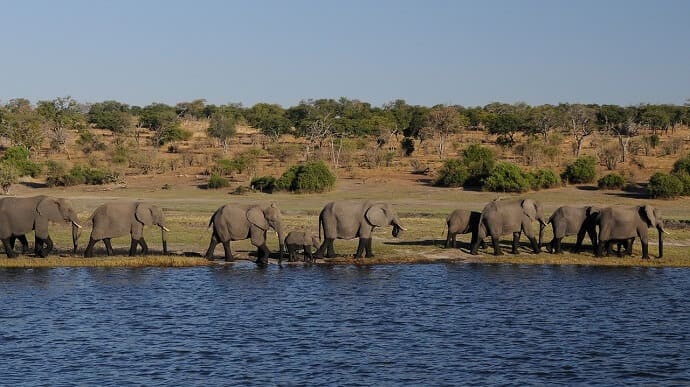
Chobe River Cruise (Botswana)
Botswana is currently #1 on our African safari bucket list, primarily because of the country’s forward-thinking approach to wildlife conservation and its diverse array of national parks.
Botswana banned commercial hunting entirely in 2014, with an unofficial shoot-to-kill policy for poachers.Anti-poaching units are overseen by the Botswana Defense Force, with more training, weapons, and other resources than APUs in other African nations.
As a result, Botswana has emerged as one of the world’s hottest ecotourism destinations. There are Big 5 safaris at Moremi Nature Reserve and canoe trips through the Okavanago Delta, plus uncrowded gems such as Nxai Pan National Park and the Central Kalahari Game Reserve.
But arguably the jewel in Botswana’s ecotourism crown is Chobe National Park, the country’s first, which boasts one of the highest wildlife densities in all of Africa. The park is world-renowned for its huge African Elephant population (estimated around 50,000), as well as many Lions and other predators that feed on young Elephants.
Because road conditions in the area vary wildly depending on the season, taking a Chobe River cruise is arguably the best way to see the park.
You’ll get incredibly unique opportunities for wildlife photography as the boat parts the waters between hippos, elephants, crocodiles and more.
READ MORE: 55 Interesting Facts About Elephants
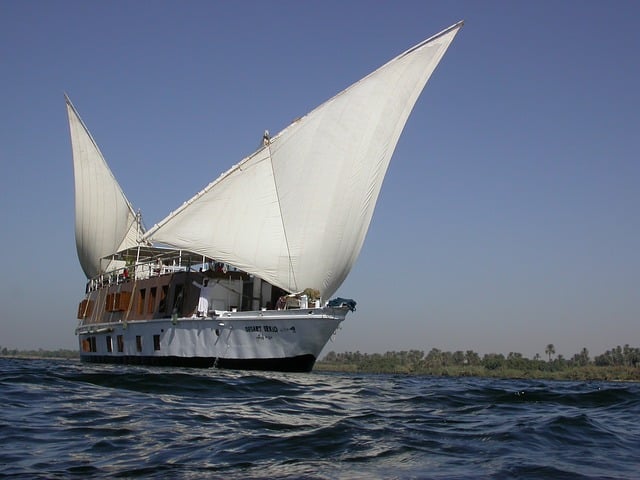
NILE RIVER CRUISE
If you’re interested in ancient history, archaeology, and rich indigenous culture, exploring Egypt’s pyramids, temples, and colorful bazaars should definitely be on your bucket list. And right now the country’s lagging tourism industry could really use more visitors.
Small ship cruises down the Nile River and/or Lake Nasser offer an excellent alternative to overland adventures. They allow travelers to hit world-renowned highlights such as the Great Pyramids of Giza, Luxor Temple, and the massive rock temples of Abu Simbel along the way.
Cruises are also the only way to visit the Temple of Isis at Philae. It’s located on an island in the reservoir downstream of the Aswan Dam, and accessible only by boat.
If you get a chance, don’t miss an opportunity to take a hot air balloon ride over the Valley of the Kings, which is home to at least 63 tombs and chambers that served as the final resting place for Pharaohs and nobles buried during the 16th to 11th centuries BC.
READ MORE: 20 Longest Rivers in the World
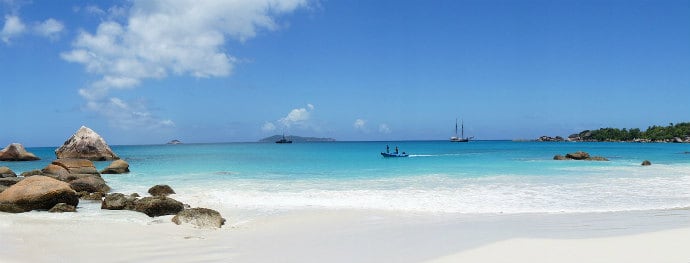
Seychelles Cruise
Located nearly 1,000 miles off the coast of mainland Africa east of Kenya and Tanzania, the Seychelles is an archipelago of 115 islands dotted across the Indian Ocean.
Realizing the nation was extremely vulnerable to climate change, the government recently brokered a deal in which their debt was cleared in exchange for protecting two important marine areas. Together, these marine reserves cover more than 81,000 square miles.
The Seychelles are collectively very small, with a total population of around 94,000 people spread across 177 square miles of land. But their natural beauty makes them a favorite on lists of the world’s most beloved islands, with some visitors describing it as like “a garden of Eden.”
Highlights include the Seychelles National Botanical Gardens, Curieuse Marine National Park, Veuve Nature Reserve, and Morne Seychellois National Park. About 42% of the archipelago is set aside for conservation, protecting wildlife such as the rare Seychelles Black Parrot, Seychelles Giant Tortoises, and some of the world’s largest seabird colonies.
A Seychelles cruise is the best way to explore the islands’ myriad attractions. These range from idyllic beaches and abundant marine life to cities like Victoria (the country’s capital), which are rich with a unique mixture of African, British, Chinese, French, and Indian cultural influences.
READ MORE: The World’s 30 Best Exotic Islands to Visit
ANTARCTICA CRUISES
Antarctic Cruise
There’s a lot of very good reasons why taking a cruise to Antarctica ranks high atop most nature-lovers’ bucket lists. We frequently rank our 2012 Antarctic cruise among our favorite trips we’ve even taken.
Antarctica is the planet’s coldest, driest, iciest, and windiest continent. This leads to some seriously stunning scenery, from icebergs that tower like skyscrapers to epic mountains reflected in the still polar waters.
As if that’s not enough, there are also historic sites and scientific research stations to explore, with around 20 hours of summer daylight from December through February.
READ MORE: 30 Antarctic Animals You Can See on an Antarctic Cruise

Cruising New Zealand’s Sub-Antarctic Islands
You may know that New Zealand is divided into a North and South island. But did you know that the country also boasts remote archipelagos of islands, which have been collectively named as a UNESCO World Heritage Site for their pristine wilderness and weird wildlife?
As part of these protections, the government restricts the number of people allowed to visit the region each year. So only a few expedition-style tour operators are allowed to offer travelers cruises of New Zealand’s Sub-Antarctic islands.
These islands range from relatively well-known to completely obscure. The six Auckland Islands are located nearly 300 miles south of New Zealand’s mainland. They were formed by two ancient volcanoes, with sheer cliffs and verdant valleys carved by glaciers. They’re surrounded by the Motu Maha Marine Reserve, which is home to Sea Lions, Seabirds, and Whales.
Other Sub-Antarctic islands include Campbell Island, which is home to six species of Albatross and numerous beautiful bird species; Stewart Islands, which is rich with Māori culture and home to Rakiura National Park (which protects 85% of the land); and the Snares Islands, which is arguably the most pristine part of the region.
But the area’s biggest tourist attraction is arguably its numerous species of Penguins. These include the Little Blue Penguin (or kororā among the Māori), Yellow-Eyed Penguin, Fiordland Penguin, and Snares Penguin. You can also see massive colonies of Royal Penguins on Macquarie Island, which boasts several hundred thousand mating pairs.
READ MORE: Ecotourism in New Zealand (Top 10 Things to Do for Nature Lovers)
ASIA CRUISES
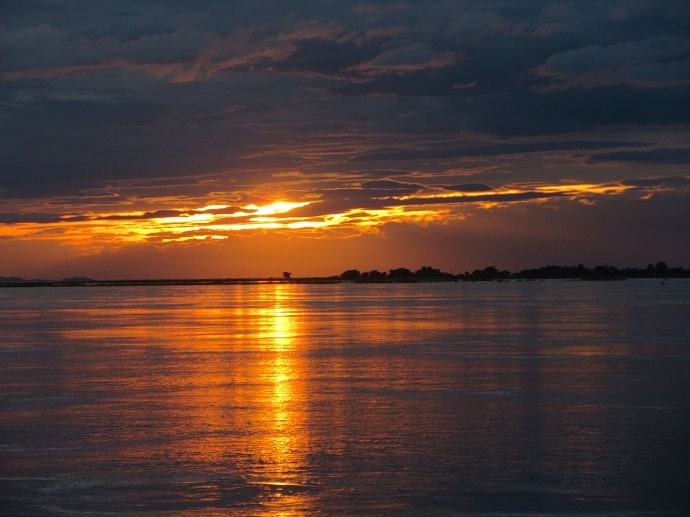
Brahmaputra River Cruise (India)
The northeast Indian state of Assam, which shares its border with Bhutan and Bangladesh, has emerged in recent years as a bright spot in Asian ecotourism.
This is thanks in large part to wildlife conservation efforts in Kaziranga National Park, which is a protected UNESCO World Heritage Site.
The park is home to the world’s largest population of Indian Rhinoceros, mammals ranging from Bengal Tigers and Asian Elephants to Sloth Bears, the endangered South Asian River Dolphin, and thousands of bird species. In short, it’s a must-see for animal lovers!
READ MORE: Indian Animals: A Guide to 40 Incredible Indian Wildlife Species

Cruising the Philippines Islands
Located in Southeast Asia near Malaysia and Indonesia, the Philippines is comprised of approximately 7,641 islands. They’re roughly divided into three geographical sections, with Luzon in the north, Visayas in the center, and Mindanao in the south.
The world’s fifth largest island nation, the Philippines covers 120,000 sqaure miles and is home to over 100 million people. They’re the most welcoming people we’ve ever met, with a diverse cultural background that includes indigenous Negritos, Polynesian, Asian, and even Spanish influences.
The Philippines Islands are jaw-droppingly beautiful, with idyllic ocean views, dynamic karst landscapes, and immense biodiversity. Mass tourism hasn’t become a huge problem yet, but palm oil plantations are endangering some of the once-pristine forests of Palawan.
Still, there are plenty of off-the-beaten-path places you can visit while cruising the Philippines Islands, from traditional villages in remote communities to some of Southeast Asia’s finest ecotourism attractions.
Highlights include Tubbataha Reefs Natural Park, a UNESCO World Heritage Site with abundant marine life (including 300+ types of coral and 600 fish species); Apo Reef, a Scuba diving hotspot and the world’s second-largest contiguous coral reef; the beautiful beaches of Hundred Islands National Park; and Coron, with the breathtaking scenery around Kayangan Lake.
READ MORE: Top 15 Things to Do in Coron, Palawan (Philippines)
CARIBBEAN CRUISES
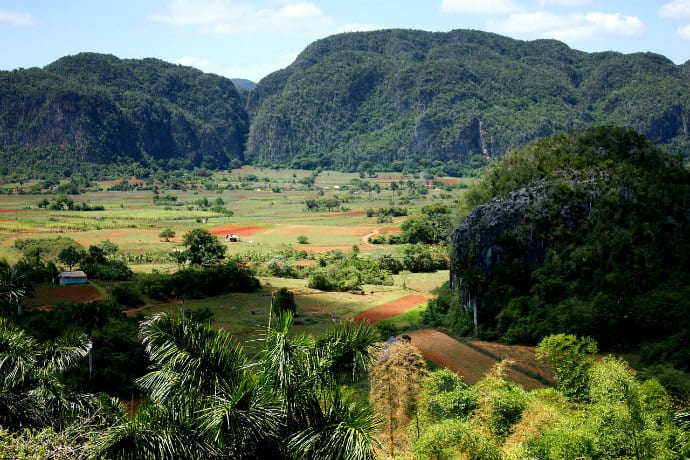
Coastal Cuba Cruise
President Obama loosened the decades-long restrictions on Americans traveling to Cuba several years ago, causing a dramatic surge of interest in traveling to the Caribbean island.
With Donald Trump actively working to reverse these improved diplomatic relations, there’s never been a better time to explore Cuba’s pristine natural wonders and rich local culture.
A circumnavigation of Cuba via small ship offers travelers a unique opportunity to explore parts of the country that most Havana visitors never get to see.
In addition to the culture of the capital city, the Caribbean’s largest island offers majestic mountains, verdant valleys, and rich Colonial history. There’s also a diverse array of wildlife in national parks and nature reserves that remain far off the beaten path of mass tourism.
Lesser Antilles Cruise
When most Americans think of the Caribbean, they tend to think of perennial sun/surf/sand hotspots such as the Bahamas, Cayman Islands, and Jamaica.
But the more remote islands of the Lesser Antilles (which form the eastern boundary of the Caribbean Sea and the Atlantic Ocean) are generally less over-developed and more pristine than those crowded mass tourism destinations.
Included among the Lesser Antilles islands are Martinique, St. Lucia, Saba, Sint Eustatius, and Grenada, which has recently emerged as a haven for ecotourism. Popular activities in the region range from bird watching and snorkeling/Scuba diving to fascinating history tours.
But our favorite island in the area is Dominica. From the gorgeous Emerald Pool waterfall and diving Champagne Reef to hiking Morne Trois Pitons National Park, the Caribbean’s “Nature Island” should be on every beach vacation lover’s bucket list.
READ MORE: 20 Best Caribbean Islands to Visit
EUROPEAN CRUISES
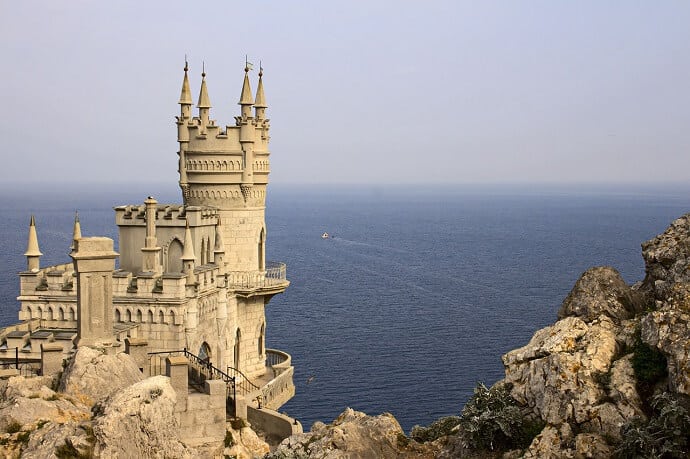
Black Sea Cruise
As bodies of water go, the Black Sea is pretty strange. On the map, this inland sea looks more like a giant lake, connected to the Aegean Sea (and the Mediterranean) by the narrow Bosphorus Strait.
But, with 168,500 square miles of surface area and a maximum depth of 7,257 feet, the Black Sea is considerably bigger than the world’s largest lakes. It touches the shores of six different countries– Bulgaria, Georgia, Romania, Russia, Turkey, and Ukraine.
With layers of both fresh and salt water, the Black Sea is home to three species of endemic Dolphins and Porpoises, Grey Seals, and Beluga Whales. These unusual waters are also home to a diverse array of anemones, coral, fish, jellyfish, seahorses, and stingrays.
Taking a Black Sea cruise is the best way to explore this unique region, which also offers historical cities, natural wonders (including the Caucasus, Crimean, and Pontic mountains), rich traditional cultures, fabulous art, and ancient archaeological sites.
Must-see sites you can visit while cruising the Black Sea include Instanbul’s Hagia Sophia and Blue Mosque, Romania’s Danube River Delta, the Ukranian city of Odessa, and Sochi Olympic Park, the first theme park in all of Russia.
READ MORE: 40 Fascinating Facts About Russia’s Amur Leopard
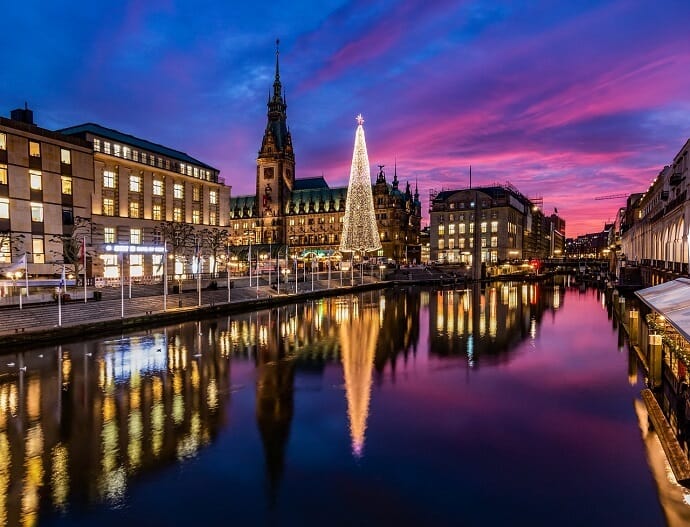
European Christmas Market Cruise
Although we’re not at all religious, our family goes bonkers for Christmas, especially anything to do with Santa Claus, Christmas Lights, Christmas Trees, and other holiday traditions.
European Christmas markets date back more than 600 years, making them one of the world’s most ancient Christmas events. The “December market” in Vienna dates back to 1298, but the first true Christmas markets originated in German cities such as Bautzen (1384) and Frankfurt (1393).
Also commonly known as a Weihnachtsmarkt or Christkindlmarkt (Christ child market), these popular street markets are held in town squares during the four weeks of advent. They typically include open-air stalls selling seasonal food (including Lebkuchen, or gingerbread cookies), drinks, and Christmas decorations, plus Nativity scenes, Christmas carols, and more.
The holiday tradition has since spread all across the continent. You’ll find some of the best European Christmas markets in German hotspots like Nuremberg and Dresden, Florence, Prague, Vienna, Budapest, Krakow, and Strasbourg, France.
If you want to visit multiple Christmas markets in one epic journey, a small ship cruise down rivers such as the Danube (Hungary-Austra-Germany) or Rhine (Switzerland-Germany-France- Netherlands) offers opportunities to immerse yourself in the sights and sounds of the season.
READ MORE: 75 Christmas Traditions Around the World
Greek Islands Cruise
From to the ancient history of Athens to Meteora’s majestic mountains, mainland Greece has plenty to offer travelers with an interest in nature, culture and history.
But for a true taste of Greek tradition, it’s hard to beat small ship cruises through the countless Greek islands (estimates of which range from 1,200 to 6,000). The two cruises we took back in 2014 introduced us to wonderful array of foods, cultural traditions, and archaeological sites.
The Saronic Islands are tiny (7.4 to 59 square miles) and quaint: Many mainland residents have vacation homes there, so it’s a great place to catch locals in a celebratory mood. They’re also considerably less crowded with tourists than some of the more famous islands.
The Cyclades, with 220+ islands, is the densest and most popular grouping in Aegean archipelago thanks to Delos, Mykonos, and Santorini. For ancient history, the Dodecanese Islands (especially Rhodes) and Crete are hard to beat.
And while Mediterranean cruises can be expensive, you can also find some great cruise deals if you’re willing to travel during the shoulder season or off-season!
READ MORE: 40 Photos Of Greece That Will Make You Want To Go
NORTH AMERICA CRUISES
Northwest Passage Cruise
The Arctic Circle is considered to be one of the planet’s last truly wild places.
The Arctic region encompasses northern Alaska and Canada, most of Greenland, and parts of Russia and Scandinavia. It’s home to more than 500,000 indigenous peoples (whose ancestors settled there tens of thousands of years ago) and an impressive array of wildlife.
From viewing the Aurora Borealis to learning about Inuit cultural traditions, this is a dream trip for every explorer’s bucket list.
READ MORE: Polar Bears Photo Gallery
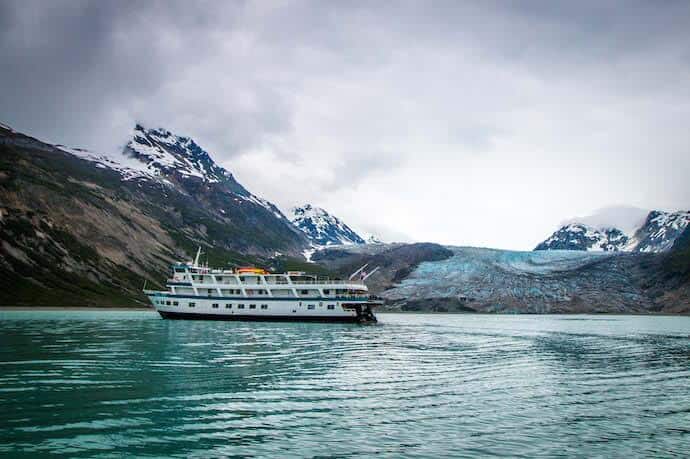
Alaska Inside Passage Cruise
Stretching from Washington State’s Puget Sound north to the Alaska Panhandle, the Inside Passage is a coastal route in the Pacific Northwest. Popularized during the Klondike Gold Rush, the route allows ships to avoid the bad weather and often rough waters of the open ocean.
Today, around 36,000 boats navigate portions of this route each year, from massive cruise ships and freighters to smaller fishing vessels and tugboats. But tourism is by far the most profitable industry in the area, attracting some 2 million travelers per year.
Fortunately, mega cruise ships can’t access many of the stunning sites we saw during our Alaska Inside Passage cruise with AdventureSmith and Alaskan Dream Cruises. The Alaskan portion encompasses 1,000 islands, 15,000 miles of shoreline, and thousands of bay, coves, and glaciers.
Highlights of this epic adventure include exploring Glacier Bay National Park, kayaking around icebergs in the Ford’s Terror Wilderness area, hiking around Lake Eva in Sitka, and learning about the indigenous Tlingit culture at museums in Juneau and Wrangell.
There’s also plenty of Alaskan Animals along the way, including Black and Grizzly Bears, Moose, Caribou, Bald Eagles, Puffins, Harbor Seals, Sea Lions, Orca, and Humpback Whales.
READ MORE: Visiting the Alaska Wildlife Conservation Center
SOUTH AMERICA CRUISES
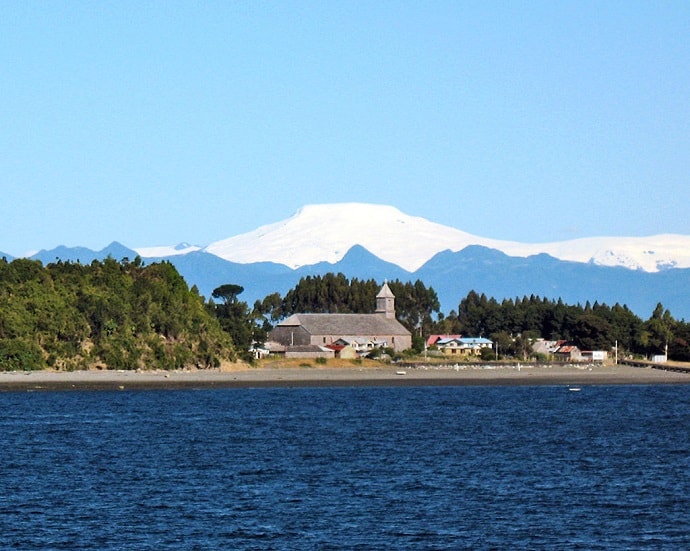
Chilean Fjords Cruise
When it comes to Chilean travel, the wine region around Santiago and the dynamic landscapes of Torres del Paine National Park in Patagonia tend to get most of the attention.
But, tucked away on the coast where the Atlantic meets the foothills of the Andes Mountains, there’s an incredible archipelago that’s far removed from the path the mass tourism crowd takes.
Chiloé Island is small, intensely green and populated by the Chilote people, whose spirituality is rooted in the mythology of forest gnomes, ghost ships and witchcraft.
The area also offers stunning Andean landscapes, massive glaciers, and wildlife ranging from Dolphins and Whales to Leopard Seals. There are myriad seabirds, including huge colonies of Humboldt and Magellanic Penguins. A small ship cruise is arguably the best way to see them.
READ MORE: Exploring Grytviken, South Georgia Island

Galapagos Islands Cruise
A small ship is vital if you want to really explore the Galapagos Islands. With 18 major islands (most of which remain uninhabited) and 3 smaller islets spread across 3,040 square miles, land-based tours barely scratch the surface of this nature-lover’s paradise.
The incredible array of flora and fauna you’ll find in the Ecuadorian archipelago is wildly different from island to island. As documented in his book The Voyage of the Beagle, Charles Darwin found that animals adapted genetically to a given island’s unique ecosystem.
Endemic species such as Galapagos Flightless Cormorants, Galapagos Penguins, Galapagos Sea Lions, Giant Tortoises and Marine Iguanas are mostly unafraid of humans. And the snorkeling/diving you’ll find off the coast is undeniably spectacular.
READ MORE: 30 Amazing Galapagos Island Animals
Peruvian Amazon River Cruise
Brazil boasts a whopping 60% of the Amazon rainforest’s total area of 2,100,000 square miles. Unfortunately, that country’s unsustainable exploitation of its natural resources has damaged this once-pristine ecosystem, perhaps irreparably.
For a better taste of the Amazon rainforest’s world-famous biodiversity, you’ll want to take a river cruise out of Iquitos, Peru.
There you can board a small ship cruise that will take you 600 miles along the mighty river. You’ll also take smaller boats that allow guests to venture deep into the Amazon river’s various tributaries.
There are no words that can aptly describe the feeling of seeing countless Howler Monkeys, Iguanas, Pink River Dolphins, tropical bird species, and occasional big cats (Jaguars, Ocelots, etc.) as you glide through the forest.
Spending time with the welcoming Ribereños who live there is a memory we’ll treasure forever.
READ MORE: Cruising the Peruvian Amazon
SOUTH PACIFIC CRUISES

Great Barrier Reef Cruise
Don’t believe the hype! Click-bait headlines claimed Australia’s Great Barrier Reef dead in 2016 after a cheeky column by Rowan Jacobson appeared in Outside. But news of the demise of the place UNESCO called “the most impressive marine area in the world” was greatly exaggerated.
Yes, the reef suffered coral bleaching due to warming caused by climate change. But most of that damage happened in a relatively small area.
The Great Barrier Reef is our planet’s largest and most vital marine ecosystem. It’s comprised of over 2,900 individual reefs and 1,050 islands, which stretch out over 1,400 miles. With an expansive 133,000-square mile area, the reef is larger than the United Kingdom.
Despite the bleaching, it remains one of the world’s great bastions of marine biodiversity. It’s home to 30 different species of cetaceans, over 1,600 species of fish, 3,000 species of mollusk, around 125 species of sharks and stingrays, and 220 species of birds.
It also harbors the world’s largest dugong population and major breeding grounds for six species of sea turtles.
READ MORE: 10 Awesome Australian Road Trips
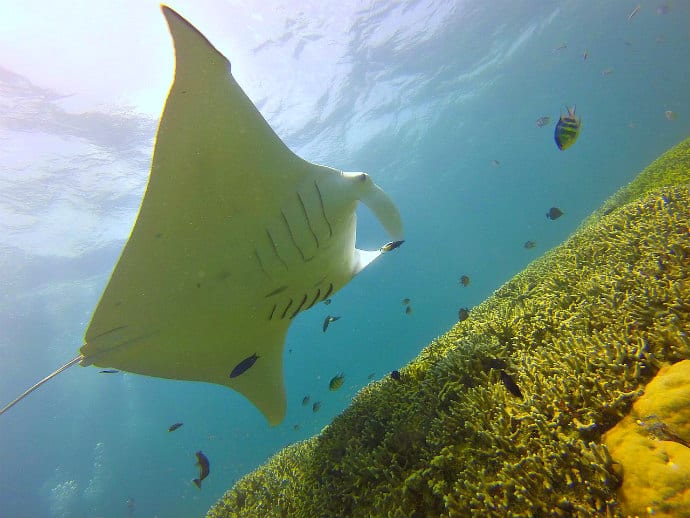
Micronesia Cruise
Spread across the western Pacific northeast of Papua New Guinea, the Federated States of Micronesia is comprised of more than 600 islands.
The country is made up of four island states– Pohnpei, Kosrae, Chuuk, and Yap– and known for its palm-shaded beaches, ancient ruins, and thriving indigenous cultures. If you want to see the best of them in one trip, a cruise is really the only way.
The islands are widely ranked among the world’s best Scuba diving destinations. The archipelago offers pristine coral reefs which are home to around 1,300 species of fish. Its waters are also littered with WWII shipwrecks, many of which lie in fairly shallow depths.
If you’re into wreck diving and history, the San Francisco Maru (discovered in 1972) is a must-see. The ship’s cargo holds are filled with sea mines, torpedoes, bombs, aircraft engines, two Japanese tanks and many more WW2 artifacts.
It’s a deep, technical dive at 131 to 190 feet, but well worth it for those who are qualified.
READ MORE: 5 Rare Sharks Worth Saving
Polynesian Islands Cruise
There are so many beautiful Polynesian Islands, it would be impossible to pick just one favorite.
But, with less than 2,000 miles separating tropical hotspots such as Tahiti and Fiji, a small-ship cruise offers the perfect way to explore numerous gorgeous getaways in just a few weeks.
From pearl diving in Bora Bora and birdwatching in the Cook Islands to scuba diving in the Marquesas Islands and immersing yourself in the traditional culture of Tonga, these islands offer an incredible array of exciting ecotourism activities.
After exploring several Polynesian islands for ourselves a few years ago, we can assure you that their romantic allure is even more magical than the guidebooks would lead you to believe! –by Bret Love; photos by Bret Love & Mary Gabbett unless otherwise noted
READ MORE: 21 Photos of Tahiti To Fuel Your Fantasies
